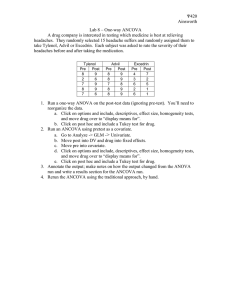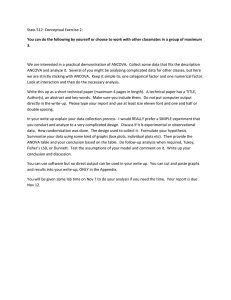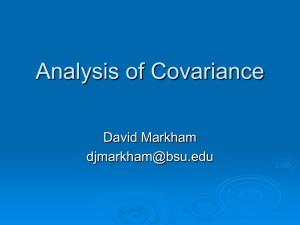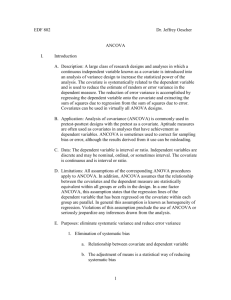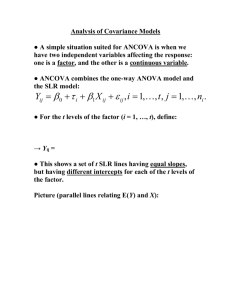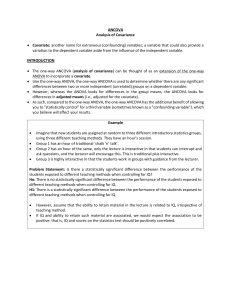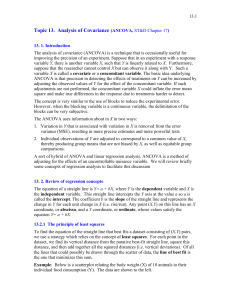Special Topic: Analysis of Covariance (ANCOVA) Uses of ANCOVA
advertisement
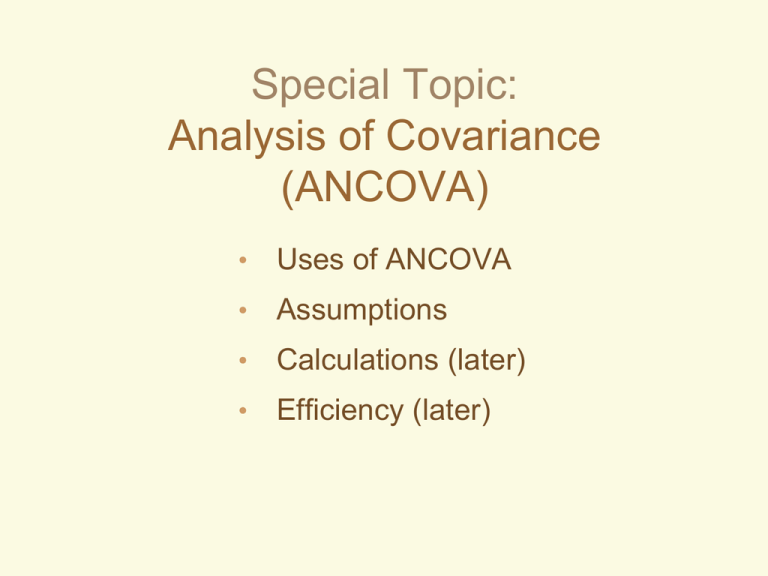
Special Topic: Analysis of Covariance (ANCOVA) • Uses of ANCOVA • Assumptions • Calculations (later) • Efficiency (later) Why use ANCOVA? Measure a concomitant variable (covariate) to control experimental error Examples – Initial status of experimental units before treatments are applied • Plant height • Nutrient status of plants or plots – Events beyond our control that introduce error into the experiment • Stand losses not related to the treatments applied – Performance of repeated check(s) in the experiment – Trends in residuals over time or space How is ANCOVA applied? Employs regression analysis within an ANOVA Means are adjusted to a common level of the covariate(s) Treatments can be compared fairly Linear Model for ANCOVA (for an RBD) Yij i j Xij X.. ij = mean ρi = ith block effect j = jth treatment effect β Xij − X. . = covariate effect ij = random error Means are adjusted to remove the covariate effect from error Yij Xij X.. i j ij ANCOVA assumptions The covariate(s) (X’s) are fixed, measured without error, and independent of the treatments The regression of Y on X is linear Effects in the model are additive; the regression of Y on X is independent of the block and treatment effects Residuals are normally and independently distributed with a mean of zero and common variance
